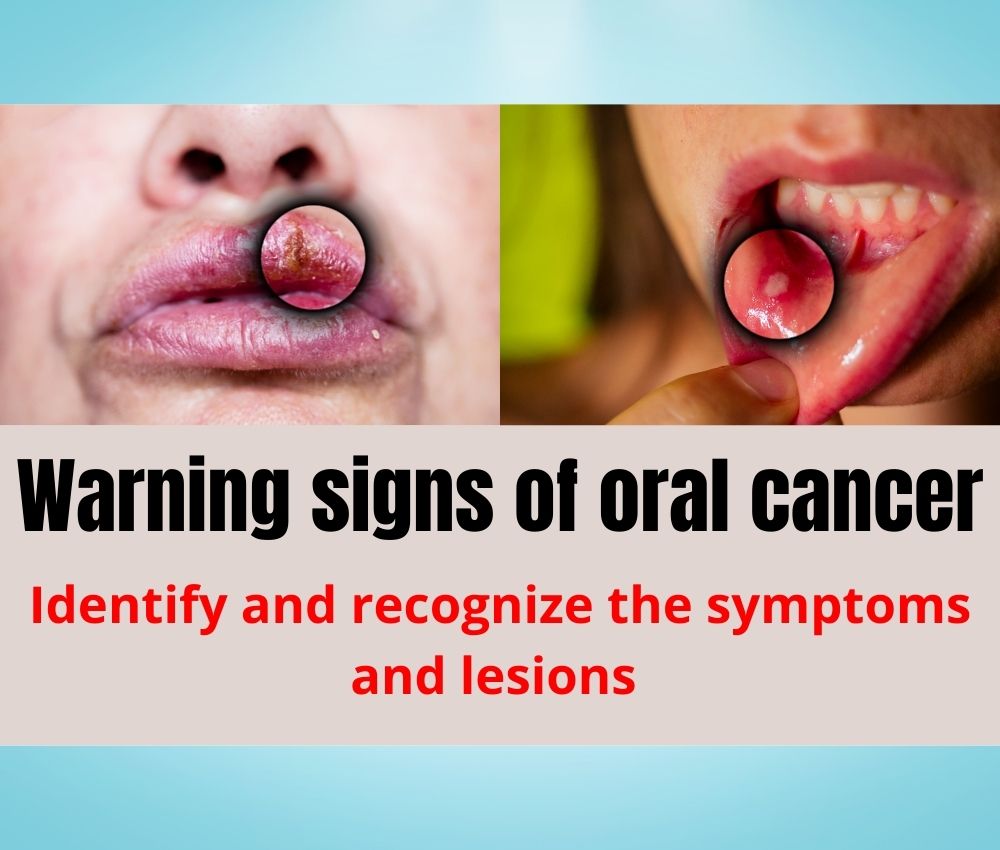Oral cancer is one of the most serious and life-threatening diseases in dentistry, often diagnosed at late stages due to subtle or ignored symptoms.
📌 Recommended Article :
Dental Article 🔽 Warning signs of oral cancer - Identify and recognize the symptoms and lesions ... Early detection significantly improves survival rates, yet many cases remain undiagnosed until advanced stages. Recognizing early warning signs and lesions is crucial for timely intervention and optimal prognosis.This article highlights the five most common early signs of oral cancer that patients and clinicians should recognize for timely diagnosis and effective management.
Advertisement
✅ Introduction
Oral cancer refers to malignancies affecting the lips, tongue, cheeks, floor of the mouth, and oropharynx. According to the World Health Organization (WHO, 2024), oral cancer accounts for nearly 3% of all cancers globally, with tobacco, alcohol, and human papillomavirus (HPV) as major risk factors. Early detection is crucial since survival rates exceed 80% when diagnosed in the initial stages, compared to less than 30% in advanced stages (Warnakulasuriya, 2023).
📌 Recommended Article :
Video 🔽 Webinar: Oral cancer: Risk factors, management, procedures and types of treatment ... Let's learn about the risk factors, management, and correct evaluation to identify the clinical manifestations of oral cancer. Let's also discover what the new technologies are for diagnosis and treatment.✅ Top 5 Signs of Oral Cancer
1. Persistent Mouth Ulcers
Non-healing ulcers lasting longer than two weeks are among the earliest warning signs. These lesions may appear painful or painless and often resist conventional treatments.
2. Red or White Patches (Erythroplakia and Leukoplakia)
These patches may signal premalignant changes. Erythroplakia, in particular, carries a higher risk of malignant transformation than leukoplakia (Rivera, 2024).
3. Unexplained Bleeding or Pain
Frequent bleeding without trauma or persistent oral discomfort could indicate epithelial invasion or vascular fragility associated with early carcinoma.
4. Difficulty in Chewing or Swallowing (Dysphagia)
This symptom is often due to the infiltration of cancer cells into the muscles or nerves of the oral cavity, leading to restricted movement and discomfort.
5. Swelling, Lumps, or Thickened Tissue
Palpable masses or persistent induration in the oral mucosa should raise suspicion, especially when accompanied by numbness or loose teeth without periodontal disease.
📊 Comparative Table: Early Detection Methods for Oral Cancer
| Aspect | Advantages | Limitations |
|---|---|---|
| Visual Examination | Quick, non-invasive, cost-effective | Relies on clinician experience; may miss subtle lesions |
| Brush Biopsy | Minimally invasive; detects epithelial dysplasia | May yield false negatives; requires confirmation |
| Autofluorescence Imaging | Enhances early detection of abnormal tissue | High cost; not specific for malignancy |
| Toluidine Blue Staining | Highlights dysplastic and malignant cells | May produce false positives with inflammation |
The challenge in diagnosing oral cancer lies in differentiating early lesions from benign conditions such as aphthous ulcers or candidiasis. Many patients overlook mild symptoms, delaying consultation until advanced stages. Dentists play a key role in early identification through routine screening, risk assessment, and biopsy of suspicious lesions.
Recent studies emphasize adjunctive diagnostic tools like toluidine blue staining, autofluorescence, and brush biopsies to enhance early detection accuracy (Farah et al., 2024).
📌 Recommended Article :
Dental Article 🔽 Early Diagnosis and Management of Childhood Cancer from the Pediatric Dentistry Consultation ... This article highlights the importance of early diagnosis, the role of the pediatric dentist, and preventive oral management in children undergoing cancer therapy.🔎 Recommendations
▪️ Educate patients about the warning signs and risk factors of oral cancer.
▪️ Conduct routine oral cancer screenings during every dental visit.
▪️ Encourage tobacco and alcohol cessation programs.
▪️ Refer patients promptly for biopsy and specialist evaluation when lesions persist.
▪️ Utilize digital imaging and fluorescence technologies for early visualization of mucosal abnormalities.
✍️ Conclusion
Oral cancer is preventable and curable when diagnosed early. Recognizing signs such as persistent ulcers, red/white patches, and unexplained oral pain can dramatically improve patient outcomes. Dentists and healthcare professionals must maintain vigilance in routine examinations to ensure early detection and timely intervention.
📚 References
✔ Farah, C. S., Woo, S. B., & Scully, C. (2024). Oral Cancer and Potentially Malignant Disorders: Diagnostic and Management Update. Oral Diseases, 30(2), 101–113. https://doi.org/10.1111/odi.14783
✔ Rivera, C. (2024). Global Epidemiology and Risk Factors of Oral Cancer. Journal of Oral Oncology, 128, 105908. https://doi.org/10.1016/j.oraloncology.2024.105908
✔ Warnakulasuriya, S. (2023). Global Burden of Oral and Oropharyngeal Cancer: Trends and Challenges. Oral Oncology, 141, 106289. https://doi.org/10.1016/j.oraloncology.2023.106289
✔ World Health Organization. (2024). Cancer Fact Sheet: Oral Cancer. https://www.who.int/news-room/fact-sheets/detail/cancer
📌 More Recommended Items
► The Importance of Dental Health During Cancer Treatment
► How to identify the early signs of oral cancer
► What are Oral Potentially Malignant Disorders?















